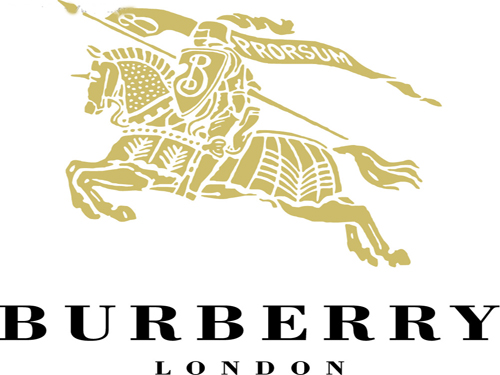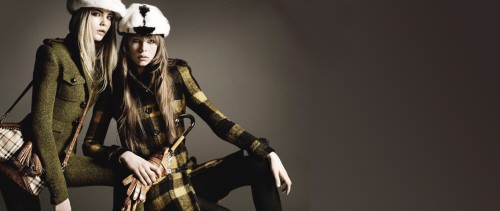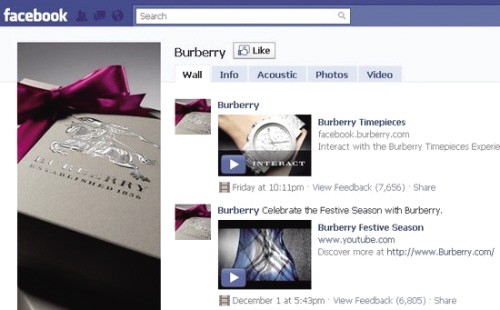Burberry Brit Fall/Winter 2011/2012 Series Advertisement Burberry's Facebook page Stand-Up Bag,Transparent Bag,Zipper Polybag Xinfengyuan Plastic Products Co., Ltd. , http://www.gdpolybags.com



Fourteen years ago, the Burberry company was almost converted into a ranch. The prospects were confusing. Its trademark was placed on cake boxes, napkins, and aprons. Burberry invited an American woman named Rose-Marie Bravo to serve as reinforcements and became their chief executives, hoping that the saltwater fish would turn over. Ross-Marie Bravo began to take over Burberry, to allow Burberry to follow the bizarre rapport of rappers into the door of luxury brands. Although Ross-Marie Bravo managed to stabilize Burberry during her nine-year tenure, laid the foundation for her next management, and constantly broke market expectations, whether or not he could Lee hitting a good luxury brand, her management team is still not sure.
The next stage was led by Angela Ahrendts who joined Burberry in 2006. Since she took over, Burberry has jumped to the front of the luxury assessment list, doubling turnover and market capital to £1.5 billion and £5.8 billion respectively. This is LVMH Group’s turnover and market capital over the same period. Double the rate of growth.
Recent sales show that its fiscal revenue increased by 27% and operating profit increased by 37%. However, the initial benign market reaction began to weaken because the company foresees that its flagship stores require more investment, which will affect profit growth in the short term.
Moderately adjusted brand structure The correct definition of the brand organization is that it is the basis for establishing a branded business. Take the store as an example, the foundation of a brand is sometimes increased to adapt to a new market or demand. The end result is that there is no common clue for a bunch of brands and sub-line brands. Originally trying to attract all people, the final one cannot attract. This is the predicament of Burberry's 14 years ago. The task of dredging is arduous. It is necessary to stop the sales of licenses (the sales of product licenses decreased from 32 in 1998 to 3 in 2011), close the wholesale business, redefine the retail channels and position brands, and phase out the strategic position in the company and the overall Development of inconsistent (albeit profitable) sub-line brands, although these brands also entered the company's most important strategic markets, such as Japan and Spain.
Burberry now has 3 main subline brands: Prorsum, London and Brit (including Burberry Sport). Prorsum has grown very well in the past 10 years. Anna Winter participated in the Prorsum Fashion Show for the first time in 2009 when the address of the fashion show was relocated from Milan to London. London and Brit are reaping profits and have become Burberry's main sales and profit growth drivers. Brit is likely to exceed London's size. People just look at Armani Jeans and you know that Brit's growth is staying power.
Strengthen digital communication with customers Burberry believes that outside of the store, the best way to reach customers is electronic media. The company’s e-strategy covers far more than the main customer area. Burberry, with up to 5 million followers, is the most popular luxury brand on Facebook. Last year on YouTube it had 4 million channel views, and its online "art of trench uniforms" was always so attractive. In addition, it also appears on a large number of international and British Internet sites, such as Twitter, Sina Weibo, Kaixin, Douban, and Youku. The company has increased its investment in the website and now has 6 languages ​​and 45 countries can log in. Although it was very difficult to start (very slow and very difficult), now its website is constantly improving and it has already had some influence.
The company's new stores are also full of digital images, such as digital walls or digital screens, and salespeople have iPad phones that allow them to take responsibility for all of their products. This is to make the brand deepen its influence on luxury customers today and tomorrow.
The active development of multiple product categories proves that Burberry's image is a solid foundation, but it is not an easy task to become a fully mature brand that can be worn at any time. Its outerwear sales still accounted for more than half of the sales of mainline clothing, mainly women's clothing. Men's clothing has recently entered the indoor apparel and sportswear completely. It is believed that there will be an immediate increase. The two types of clothing make it easy for the brand to transform from a garment-based product structure. Although under the influence of Prorsum credibility, the more “fashionable†supply growth is more difficult to emerge, but there is no doubt that customers will eventually be found, especially in promising emerging markets.
Burberry has achieved steady growth in the non-fashion sector (mainly leather goods), which has grown at an average annual rate of nearly 20% since 2001 and now accounts for 44% of wholesale and retail sales. The company now wants to rely on small leather goods and shoes for further growth. Other areas of interest to the company include children's wear, make-up and home accessories. Because the brand is very tough, these products will certainly have customers, but the types of products that can be envisioned have been fully occupied, and now the company is going to challenge the risks of unsure products.
Re-engineering sales distribution In the past 10 years, Burberry's retail business was the main driving force for the company's extraordinary growth. In 2001, the company had 54 outlets, including a flagship store, 30 mainline brand stores, six licensed retail stores and 17 outlet stores. In 2011, the number of direct-operated stores increased to an incredible number of 417, including 174 main line brand stores (including flagship stores), 199 venue licensed merchandise retail stores and 44 outlet stores. This change was achieved partly because of the shift from privileged or wholesale sales to direct retail, most notably in Spain, South Korea, Taiwan in China, and the Chinese mainland market, and also because of the investment in new sales locations, mainly in the United States and European fashion city. Direct operation is the company's current main distribution channel, which is consistent with other major luxury brands.
In addition, in order to achieve retail growth, Burberry has become a better retailer: sales density rose from tiny 597 pounds per square foot in 2001 to nearly 1,000 pounds per square foot in 2011. The driving force for growth is the improvement of product mix and sales planning, and the timely addition of goods. However, for a luxury retailer, this is only a moderate performance. The company realizes that there is still much work to be done to improve the retail experience. The company announced that it has a major flagship store renovation project this fiscal year.
Geographical investment maintains a good balance From the outset, Burberry has had business in Japan, Spain, and the United Kingdom. Until now, by balancing geographical investment, it has become a complete international brand. One of the company’s main strategic driving forces is to invest even before it has fully penetrated. The market includes developed markets such as the United States and emerging markets such as China, India, and the Middle East. The company's store opened in China (up to 50 in July 2010) is in line with its status as a luxury vanguard and plans to double the number of stores in the most important market in the next 10 years. The United States still represents important opportunities for Burberry, as well as the Middle East and India. Burberry’s store plan is still in its infancy.
Updates to strengthen operational systems Burberry has invested a staggering amount of capital and time to increase its operations, supply chain and IT systems. Its investment strategy includes re-engineering the London headquarters into good-for-use buildings, bringing together all the company's teams for the first time. It also changed a large number of IT network flow lines into a separate global network and launched a global satellite automatic control system (excluding China for the time being). Burberry also strengthened its relationship with suppliers and strengthened logistics management. The influence of this investment can be felt in all business areas: Store direct data allows companies to respond immediately, supplementing well-sold areas; let sales planning and design teams work under the same roof making these two functional areas The cooperation has strengthened; the streamlined supply chain has saved both expenses and time to market. In short, Burberry is the first in the UK's local retail practice field. It has introduced rapid fundraising, and achieved simultaneous information dissemination of new products and worst-selling products every month across all stores and websites.
Bold Change Creates Value Burberry's luxury goods company has transformed from a licensed sales brand to a vertically integrated management model. The transformation requires a lot of investment: the investment is to build the necessary infrastructure; the capital expenditure investment is to control retail assets, license sales (although most licensed sales can be terminated rather than buyout), or to fully expand the straight Camp shop. This has to be said to be a bit like quitting **, licensing sales revenue is ultimately unfavorable for a luxury brand, but it is difficult and painful to shake off this burden, just as someone has to turn off a stable and effortless Source of income. Based on publicly available information, we found that Burberry's change from 2001 to 2011 cost almost 830 million pounds, not including the 116 million pound devaluation of the value of the closure of the Spanish business in 2009 (if unconfirmed business indirect costs were considered) The total value may be close to 1 billion pounds.) Of course it proved worthwhile afterwards: In this segment, Burberry’s fiscal revenue increased by 1 billion pounds, operating profit more than quadrupled, and market capital increased by 4.7 billion pounds. Unlike other well-known brand changes, such as Gucci, Burberry's transformation was achieved under the supervision of the public. It did not depend on the company's annual cash flow, but it still maintained profit growth (except for 2009).
The road ahead is challenging The management team at Burberry has not let this brand go too far, which is commendable. Operation, brand building and customer communication are the most important in brand management. The company has made great progress in product structure and now has balanced regional sales and retail and wholesale ratios. There is no doubt that the company is now a luxury business. Undoubtedly, in the past 10 years, as the company withdrew its license sales and developed retail, Burberry's overall growth exceeded the growth of this industry. This requires a lot of technology, effort and investment, but the fruit hanging below was long removed and the road ahead is full of challenges. It cannot be said that Burberry has already had the advantage of LVMH (LVMH is currently fully accelerated) unless Burberry gains advantages over LVMH through acquisitions. As the recent Bvlgari acquisition shows, the purchase of large luxury assets will not pay more than odds.